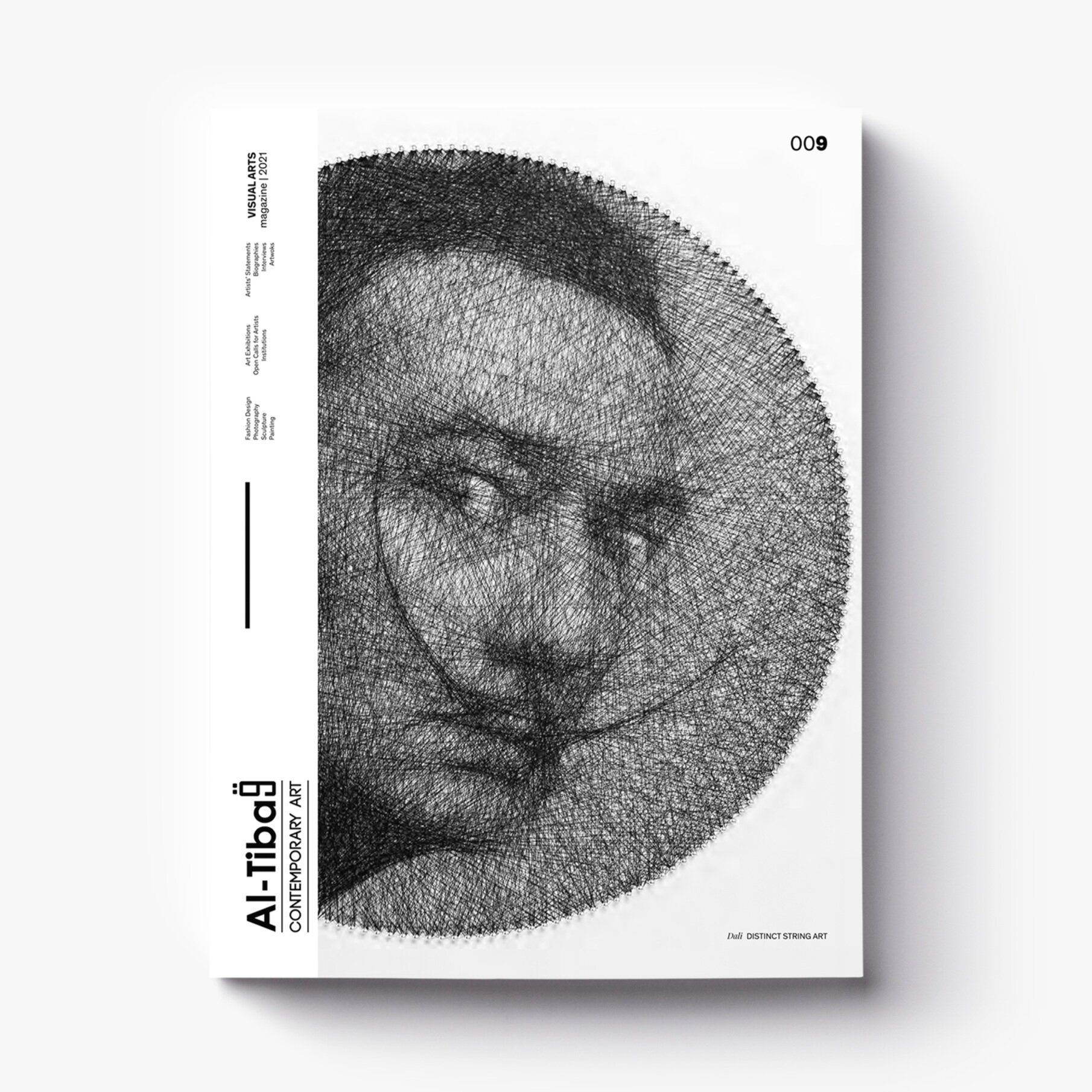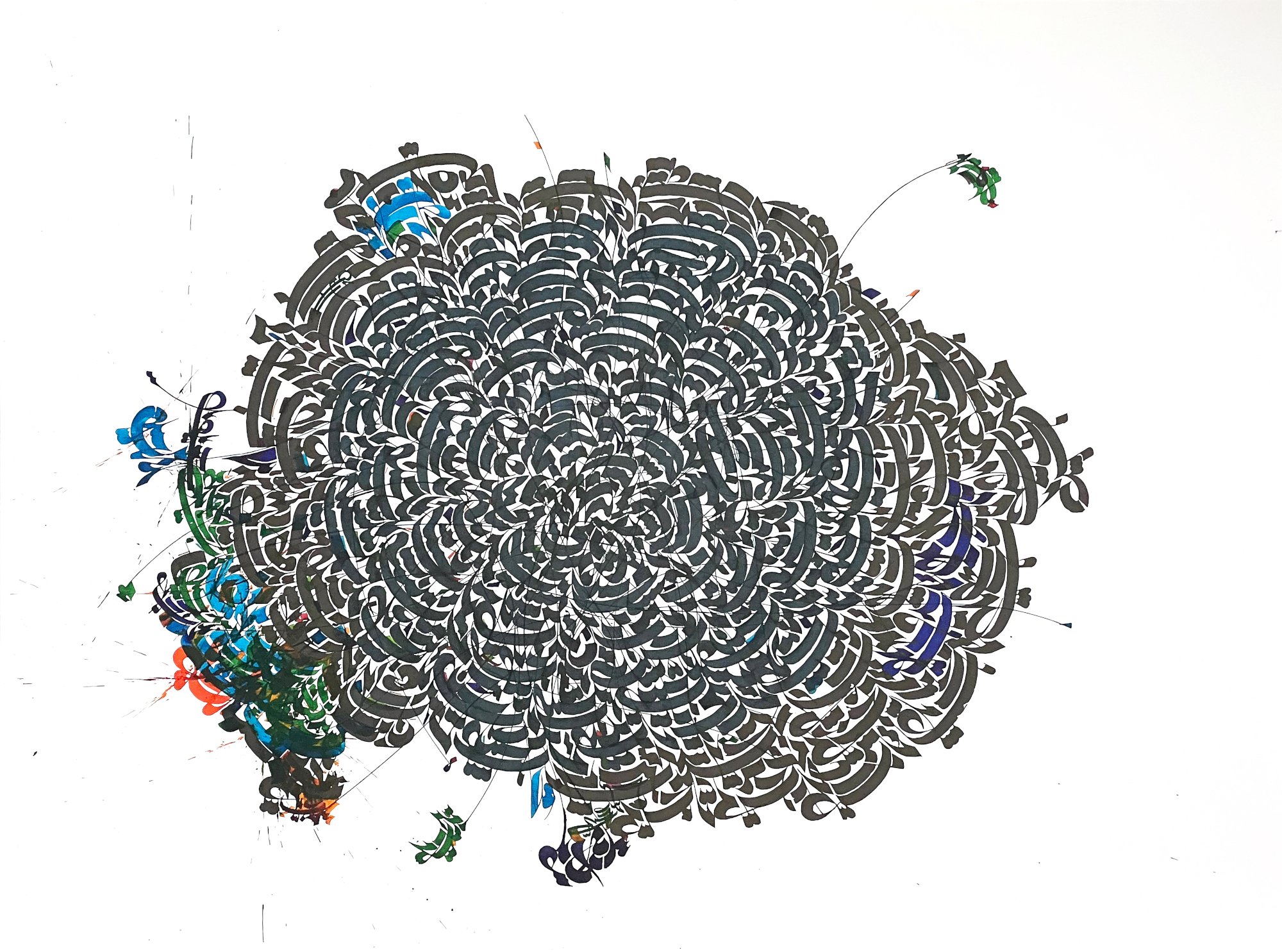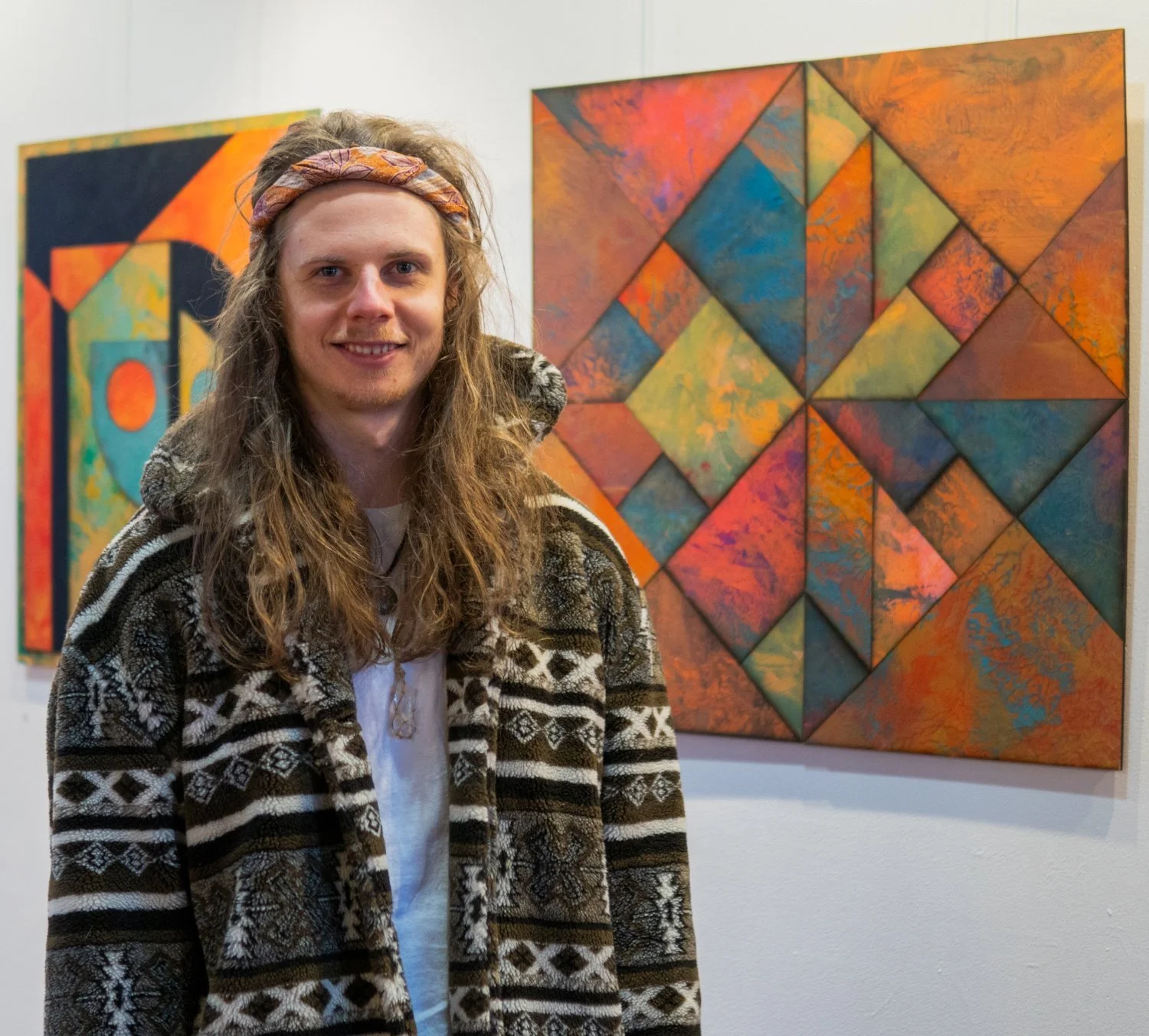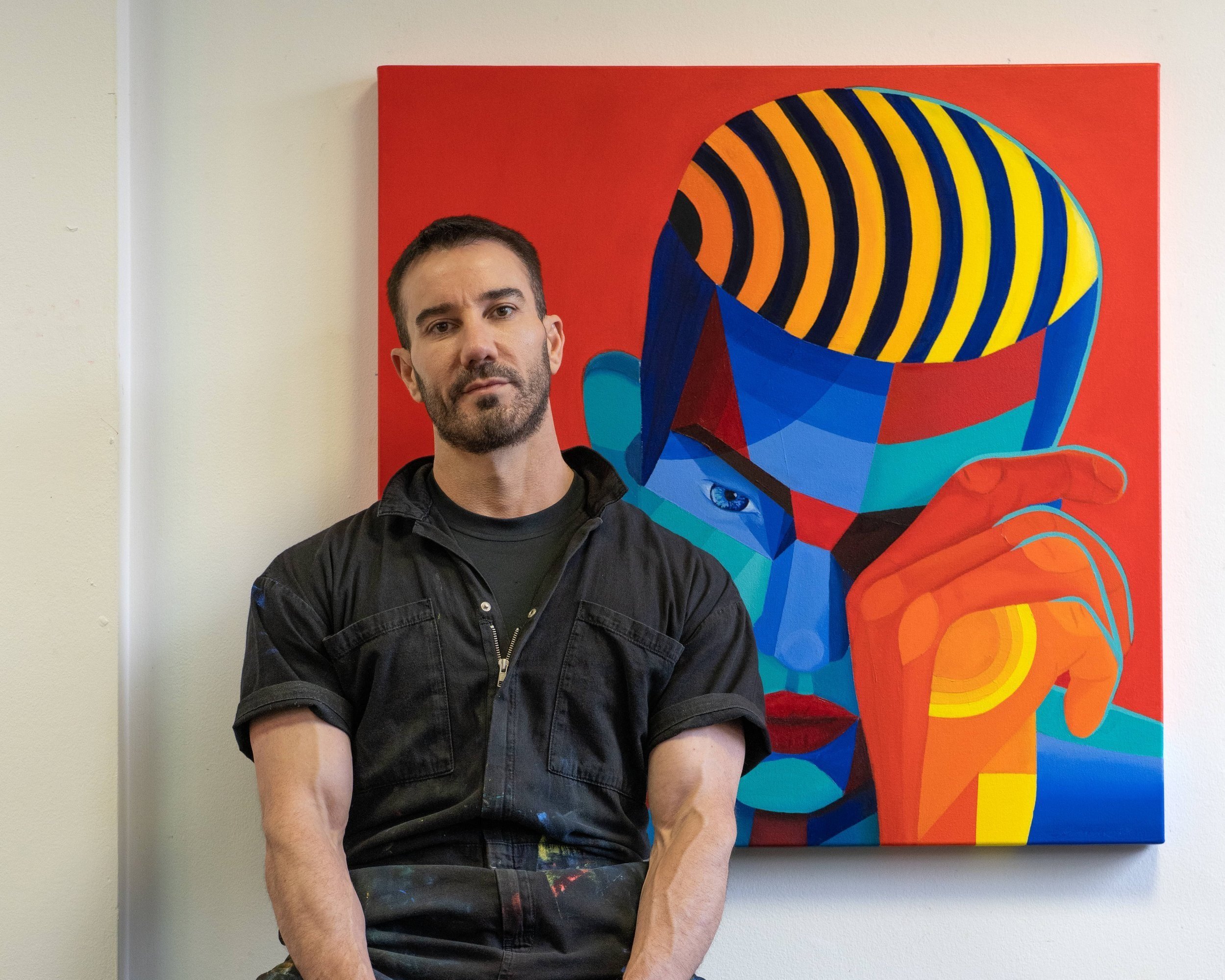10 Questions with Marcel Schwittlick
ISSUE09 Art Magazine | Featured Artist
Marcel Schwittlick is an artist living and working in Berlin, Germany. With his work, he is examining the cybernetic aspects of generative systems and modern technology. He is interested in digital culture, its influence on society, and chances for alternative types of communication. He is working in strong connection to various practices, forging a relationship between physical and digital media, traditional and modern approaches. Marcel Schwittlick is working with a variety of media, ranging from digital images, physical and interactive installations, generative poetry, and conceptual video.
So far, the artist has concentrated on the blending of digital and analog media. His main interest is combining an artistic-visual level with a technological demand and a spiritual or philosophical concept. At HTW Berlin, he studied computer science, and at the University of the Arts in Berlin, he studied art and media. This helped him grow his ideas by working behind the scenes of common software applications and getting closer to the DNA of (digital) media. It has also given the artist the ability to build his own algorithmic methods and machines.
Marcel Schwittlick graduated in 2014 with a B.Sc. in Media Computing at HTW Berlin, where he examined the technical properties of digital media. Currently, he is studying Art & Media at the University of Arts, Berlin.
Marcel Schwittlick | Ph. Klodie Zengbé
Upward Spiral | PROJECT DESCRIPTION
These spirals represent the trajectory of the artist's life and your life. All of these drawings were created during the pandemic of Covid-19 and related to the lockdown in Berlin. The emotional, spiritual and mental well-being can be on a positive trajectory to be nurturing and enabling. It is all about movement, recommencement, and guidance. The current situation can also be a catalyst for reaching your goals and developing a constructive style of correspondence. Through his work, Marcel Schwittlick wants to offer a talisman to remember where your life is.
The Upward Spiral series comprises 144 editions, which the artist draws with a custom built drawing machine. Each drawing takes about 9h to produce.
Upward Spiral © Marcel Schwittlick
INTERVIEW
First of all, introduce yourself to our readers. What are your history and your artistic background?
My name is Marcel Schwittlick, and I am an artist from Berlin, Germany. I am mainly working with computers and algorithms, making machine drawings, installations and sculptures. I was kind of into computers and the internet when I was a teenager around and after the 2000s. Back then, I wasn't really interested in art per se, but rather I was into imagining and building. In my late teenage years, I found out about processing, a lovely creative coding framework, and was blown away by the possibilities to create images with code relatively easily. This type of art was not offered in art schools at that time, so I ended up studying computer science in order to learn my new medium of choice to the core. At the moment, I do study Generative Art at the University of Arts Berlin.
You studied both computer science and art. How did these two fields interact with each other, in your opinion? And how do you incorporate them into your art?
They do go together very well, at least for me and many other people. When you are capable of writing code and using a computer well, as Computer Science does, you can simulate or sketch abstract ideas quite well and quickly. I like making things happen, and I seem to like less the science and rather the engineering aspect of computers. Computers, networks, sensors, motors, digital media, you can control a lot with computers. It's rather difficult to find your boundaries.
Upward Spiral © Marcel Schwittlick
Upward Spiral © Marcel Schwittlick
And how would you define yourself as an artist today?
I am trying to improve my discipline, keep an overview of what I am producing, documenting, indexing, and working as a production machine. I am currently in the middle of producing a 144 edition series of industrial wax drawings (Upward Spiral), which will keep me busy for another half a year at least. Doing this series feels like an appreciation of "mail art" and the continuation of previous work. I have produced and sent 50 unique algorithmic ~DIN, A3 sized plotter drawings from the series "Composition #37" to various friends, colleagues, artists, curators, and collectors all over the world.
The Upward Spiral series has a very personal meaning. It represents a reminder of the trajectory of our lives. To be mindful about whether one is in an upward and also downward trajectory, these spirals are perfectly symmetrical. For me, this type of spiral symbolizes an awareness of dynamics in life that helps avoid stress and pain. It plays with the idea of improving yourself, working on discipline and creativity. Usually, we find ourselves struggling to get our lives together, and sometimes we are succeeding at our plans to become a better person every day. There is no linear way for people to reach their goals in life. The actual human experience is much different. Being unable to control ourselves and our surroundings, we break down, and later, with the help of new discoveries, we can get back up and develop further. This is a constant flux between order and chaos; both are necessary in our lives. I think it's important to be aware of that. This is along the lines of what an Upward Spiral may represent.
I do feel like the idea of a symbiosis between machines and humans, the idea of the cyborgs, in the arts is tempting. I do appreciate the work and message of artists like Stelarc, Jonathan Meese and Sougwen Chung, Moon Ribas, and many more. I am personally leaning towards non-autonomous systems, external extensions of the artists as tools. Zero input generative art feels less relevant, and at the moment, I have an interesting time where I let the machines that I use guide my day. I like to use my work as a mantra, making drawings like breathing and shitting (to roughly cite Jonathan Meese).
Apart from this, I have the opportunity to work on a board game that communicates scientific results about climate saving research from the Fraunhofer Institute. And I am also working on an online conference of the German Stifterverband, which will include an online exhibition of a selection of my drawings. I am enjoying the multitude of projects I can engage in that make me learn and grow.
In your work, you use digital and analog media. What are the main differences in your approach to one versus the other? And do you prefer one over the other?
We all do in one way or the other, I think. I believe in using the right tool for a fitting task, and automation of things multiplies the hands you can use simultaneously. They are completely different interfaces to the world, ways to communicate. But, at the same time, they don't feel distinct to me. One thing that seems to be one of my core interests is to bring digital work out of the screen, translate and transform digital data into nature.
In your statement, you say you are interested in "digital culture, its influence on society, and chances for alternative types of communication". How do you express those interests and research in your work? Are there any other themes you are interested in?
This statement is old and still fits. The NFT and crypto phenomena of the past months and years are one example. I love seeing and being part of these dynamics. Online communities, ways of alternative governance, and other tendencies of the online world. I am interested in the sociological aspects. I am touching on these topics in my rather text-based work like the Electronic Chaos Oracle.
I am interested in mediated generative systems. In other words, my process is to develop generative systems based on scraped 4chan image dumps, recorded cursor movement data, huge databases of text like my pdf collection of art history (several tens of thousands of books), or simple math (no-input generative art). Handling and "feeling" this kind of data is part of my process to understand datasets that I then use like a tool with a custom-developed software system. Of course, this is nothing new, rather the usual approach of today's artist who has the digital toolkit in their repertoire.
And how did you evolve this way of working? How important are new technologies for your work? And how do you keep up to date with the latest trends and innovations?
I really love playing with new technologies and tools. They are much more frequent in the digital/tech world than in the arts, even though the differentiation between the two is blurry. But we all know that it's important who does it well instead of who does it first. My community of artists is all about sharing their tools and processes; like this, everybody knows the possibilities of new trends.
Eventually, I feel like I am combining two worlds, the new and the old technology. I am working with modern machine learning techniques and other software, executing the results of that world with traditional media of the past, like drawings, installation, sculpture. I have some kind of expectation on myself and my work to be aware of the most recent developments and at the same time respect and appreciate the past.
Upward Spiral © Marcel Schwittlick
Upward Spiral (detail) © Marcel Schwittlick
Upward Spiral (detail) © Marcel Schwittlick
Over the past year, we have witnessed many changes in the art world and our lives in general. What is one thing that you miss about your life pre-Covid, career and art-wise?
I am missing the closeness to people. I am missing a face that I could read, the faces of strangers. Now we have to take care of each other and wear masks. I haven't been aware of this kind of intimacy before. Art-wise, I am unsure if I am missing a lot, except the vernissages and parties. I have the feeling I might have exchanged quantity for quality when it comes to interaction with friends and people around me. That is a good thing if you ask me. Also, I am trying to make the best out of it. Travelling has usually been a huge inspiration and way to see the world with other eyes. Now that this is not possible anymore, I am learning new ways to create seeds for my future work.
And what is one new thing that over the past year you have discovered? Did you participate in any online exhibition or event?
Needless to say, it has been the NFT world. It has only been about half a year since I have joined the platform hicetnunc.xyz, a Tezos (Proof-of-Stake blockchain) based NFT marketplace that allows digital artists to build an environment to develop without the gatekeeping instances of the traditional art market.
My work on the NFT plattforms is different to 99% of the others because each of my NFT's is a photo of a drawing which comes with the NFT purchase. The shipping and packaging are included. The primary and secondary market is decelerated by the shipment of the artwork and communication between the collector and me. Although I do like real interaction and communication between people, I do not share the euphoria for the "zero-trust" utopia of the crypto maximalists.
I do think it is beautiful for people to trust each other. I am rather interested in counter-moves like the ones that artist Ben Grosser is known for. His newest work is a social media platform with maximum 100 posts per account.
Yes, I did participate in a few online exhibitions with various formats and sophistication. However, there is really a physical aspect, an experience missing from these kinds of exhibitions. I feel it was a compromise to at least do any type of event. The same problem occurs in the NFT scene; it's art on a screen. But the interactive and fast market of the web3 might also be without advertisements since it is decentralized and modular.
Upward Spiral © Marcel Schwittlick
Finally, what are you working on now, and what are your plans for the future? Anything exciting you can tell us about?
Currently, I am still working on the Upward Spiral drawing series. I am spending most of my time on Twitter and Discord to exchange with the community of digital artists. I build, fix, and restore vintage plotters and plan a few series with old and new machines. But, for the big picture, I feel like I am trying to continue the work of the computer artists of the '60s like Vera Molnar, Manfred Mohr, Pierre Hebert, Artists of the Nove Tendencija movement, and many more.
I am fascinated with plotters, the clear decoupling of the conceptual and production phase. The possibility to have an influence on these distinct levels gives me a framework to focus on the different necessary aspects of art that I want to make at this point: technically challenging, aesthetically satisfying, and spiritually empowering.




























